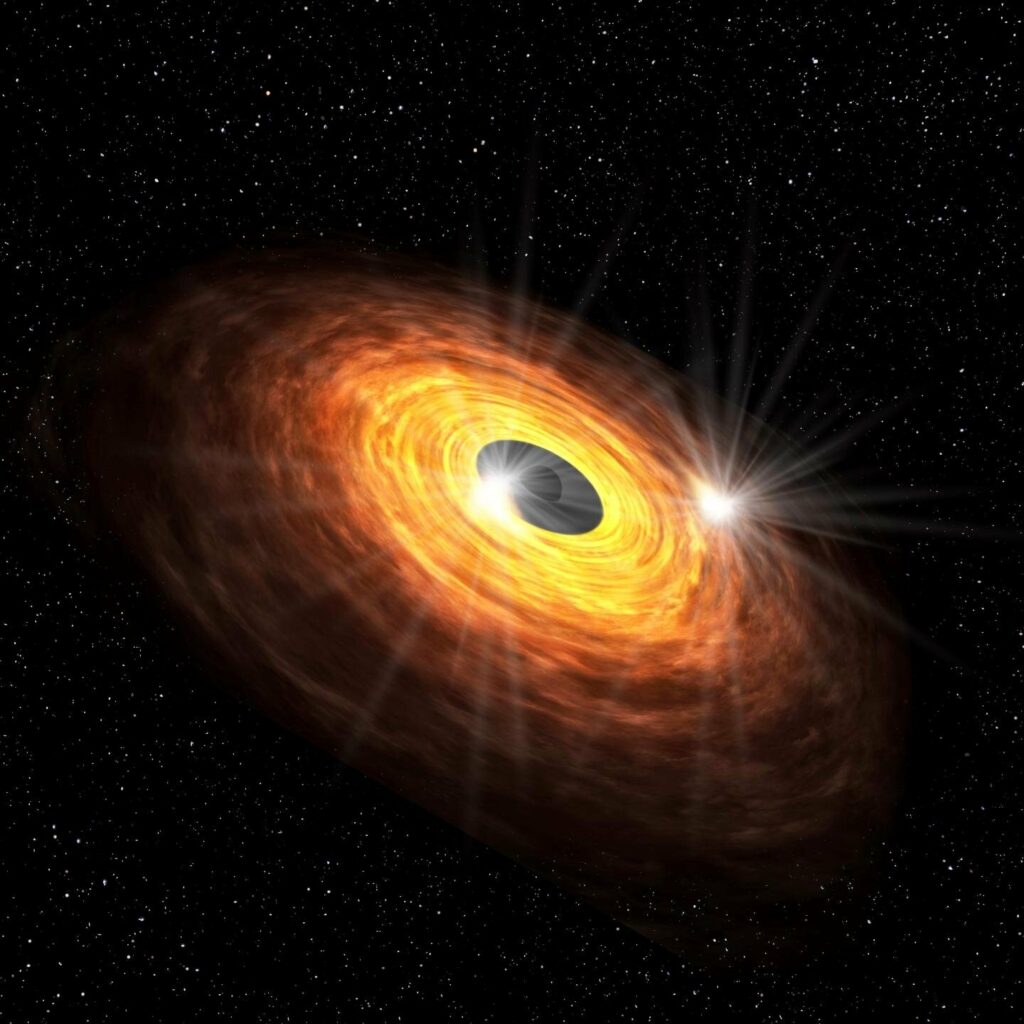Astronomers found quasi-periodic flickers in millimeter-waves from the center of the Milky Way, Sagittarius (Sgr) A* using the Atacama Large Millimeter/submillimeter Array (ALMA). The team says these blinks are due to the rotation of radio spots circling the supermassive black hole with an orbit radius smaller than that of Mercury. This might be an interesting thing to investigate spacetime in a very high gravity environment.
“It has been known that Sgr A* sometimes flares up in millimeter wavelength,” tells Yuhei Iwata, the lead author of the paper published in the Astrophysical Journal Letters and a graduate student at Keio University, Japan. “This time, using ALMA, we obtained high-quality data of radio-wave intensity variation of Sgr A* for 10 days, 70 minutes per day. Then we found two trends: quasi-periodic variations with a typical time scale of 30 minutes and hour-long slow variations.“
Astronomers believe that a supermassive black hole is located at the center of Sgr A*. Flares from this place have been observed in millimeter-wavelength and also in infrared light and X-ray as well. However, the current variations detected are much smaller than the ones previously detected, and it is possible that these levels of small variations always occur in Sgr A*.
It is known that the black hole itself doesn’t produce any emission. The source of the emission is the geaseous disk around the black hole. The gas around the black hole does not go straight to the gravitational well, but it rotates around the black hole to form an accretion disk.

Researchers focused on variations in a short time and discovered that the variation period of 30 minutes is comparable to the orbital period of the innermost edge of the accretion disk with a radius of 0.2 astronomical units (1 astronomical unit corresponds to the distance between the Earth and the Sun: 150 million kilometers). Considering huge mass at the center of the black hole, the gravity effects due to it are also extreme in the accretion disk.
“This emission could be related to some exotic phenomena occurring at the very vicinity of the supermassive black hole,” says Tomoharu Oka, a professor at Keio University.
So, the scenario is like this, hot spots are formed irregularly in the disk around the black hole and it emits strong millimeter waves. According to Einstein’s special theory of relativity, this emission is largely amplified when the source is moving toward the observer with a speed around the speed of light. The rotation speed of the inner edge of the accretion disk is huge, so this extraordinary effect arises. The astronomers believe that this is the origin of the short-term variation of the millimeter emission from Sgr A*.
Journal
Yuhei Iwata et al, Time Variations in the Flux Density of Sgr A* at 230 GHz Detected with ALMA, The Astrophysical Journal (2020). DOI: 10.3847/2041-8213/ab800d

